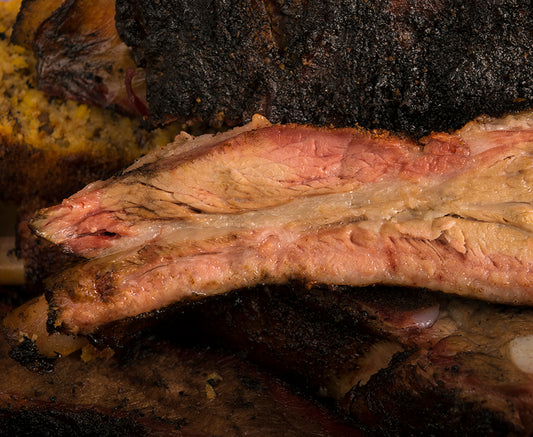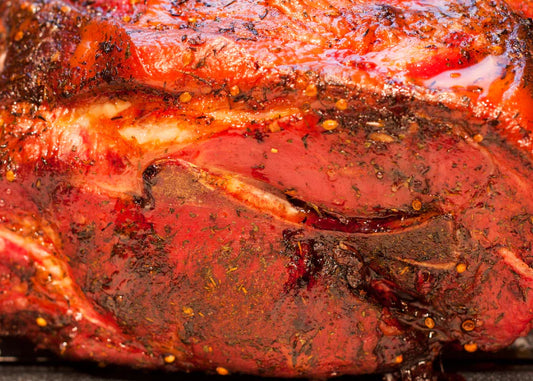There is no better way to stretch a dollar than buying food in bulk. You can then freeze the excess to save yourself trips to the grocery store. Meat is one thing that should be frozen to extend its lifespan – here are several tips for freezing and thawing meat correctly.
Preparation for Freezing
When freezing and defrosting meat, it is important to follow established rules to ensure it is frozen and thawed properly. The first thing you need to do is consider the size of your meat and the packaging options. If you are freezing store-bought meat that is already vacuum-packed, you don’t need to do much. However, any other meat requires some work before putting it in the freezer.
Before anything else, trim off the excess fat on the meat. Then, you need to cut the meat into small pieces. Freezing meat in small portions ensures it freezes evenly and quickly. It will also be easier to thaw and cook later on.

Proper Packaging for Freezing
Next, you need to select proper packaging, depending on the size of the meat. Try to stick to packaging similar in size to the amount of meat you want to freeze. For best results, don’t keep meat at room temperature for too long before freezing. If you don’t plan to cook it immediately, take it directly from the store to the freezer. Freezing meat in plastic bags is one of the best ways to do it. It is really simple and fast to do. You can easily put the meat in plastic bags and freeze it right away.
If you are only freezing a small amount of meat, you can simply place the food in a freezer bag, seal it tightly, and freeze it. Make sure to remove as much air as possible before sealing the bag. If you plan to freeze a lot of meat, you need to purchase a vacuum sealer. Vacuum sealers are designed to seal food items tightly and make sure that nothing leaks from the bag.
They also prevent your meat from absorbing other flavors in the freezer that may interfere with the meat’s natural flavor. You can find vacuum sealers at almost any grocery store. Alternatively, you can make your own vacuum sealer by following one of the many tutorials online. You can use either resealable freezer bags or reusable bags with a vacuum sealer.
If this is not possible, place the meat on a sheet of wax paper or parchment paper and wrap the paper tightly around the meat. You should then place the meat in a freezer bag. Make sure to label the packages with the date and type of meat.

Freezer Temperature Ranges
Another important factor to consider is that the temperature inside the freezer should be maintained at 40 °F or below. This is to ensure that the meat doesn’t thaw before you plan on cooking it. Therefore, you need to minimize the number of times your freezer door is opened, or maybe use one that is not used as much. Add an oxygen absorber to the bottom of your freezer, and make sure that the door to the freezer is closed tightly so that air doesn’t circulate throughout the freezer.

Proper Thawing
When thawing meat, it is important to use caution to prevent illness. If there is a chance that meat has been contaminated by bacteria, then do not thaw the meat at all. Your health should come first.
The best way to thaw frozen meat and poultry is to place them in the refrigerator overnight. However, this is a slow method of thawing meat and may actually take longer for bigger cuts. If you need to thaw it more quickly, place it in a sink of cold water. Change the water every 30 minutes. You can use the microwave to thaw smaller pieces of meat.
Don’t try to thaw meat on the counter at room temperature, however hungry you may be. The outer part is likely to attract all manner of bacteria as you wait for the inside to thaw.
Refreezing Meat
Refreezing meat and fish can cause harmful bacteria to grow, especially if the meat was brought to room temperature. When the meat or fish is thawed, the liquid that leaks out can contain bacteria.
If you use a refrigerator to thaw the meat, it will be safe to refreeze. The quality won’t hold, though—when meat or fish is frozen, the water inside the cells freezes. These ice crystals can damage the cell walls. Every subsequent refreezing will lower the quality of your meat.
Freezing Times
Different kinds of meat have different life spans. As a general rule, don’t keep the meat in the freezer for longer than a year. Although it might still be safe, the flavor and quality may not be the best. If you freeze cooked meat, the quality will decrease even faster, sometimes in even less than 3 months. Consider this before you start your freezing process.
Want to learn more about freezing and thawing meat? Check the articles below:
Freezing & Thawing Meat Methods To Keep Flavors
Can You Freeze Smoked Ribs?
How to Freeze and Reheat Meat Correctly
For more great ideas on how to get the most out of your Bradley Smoker, check out the awesome articles on our Bradley Smoker Food Smoking Blog for more tips & tricks.





